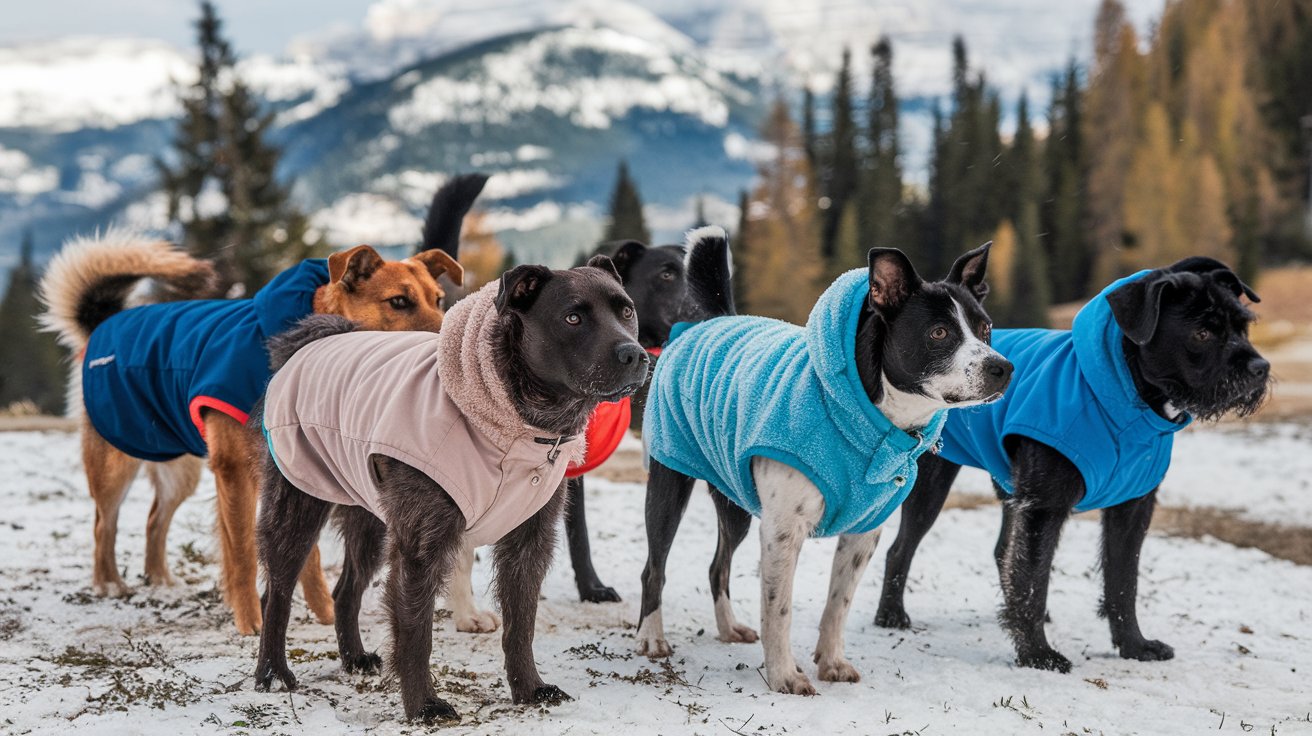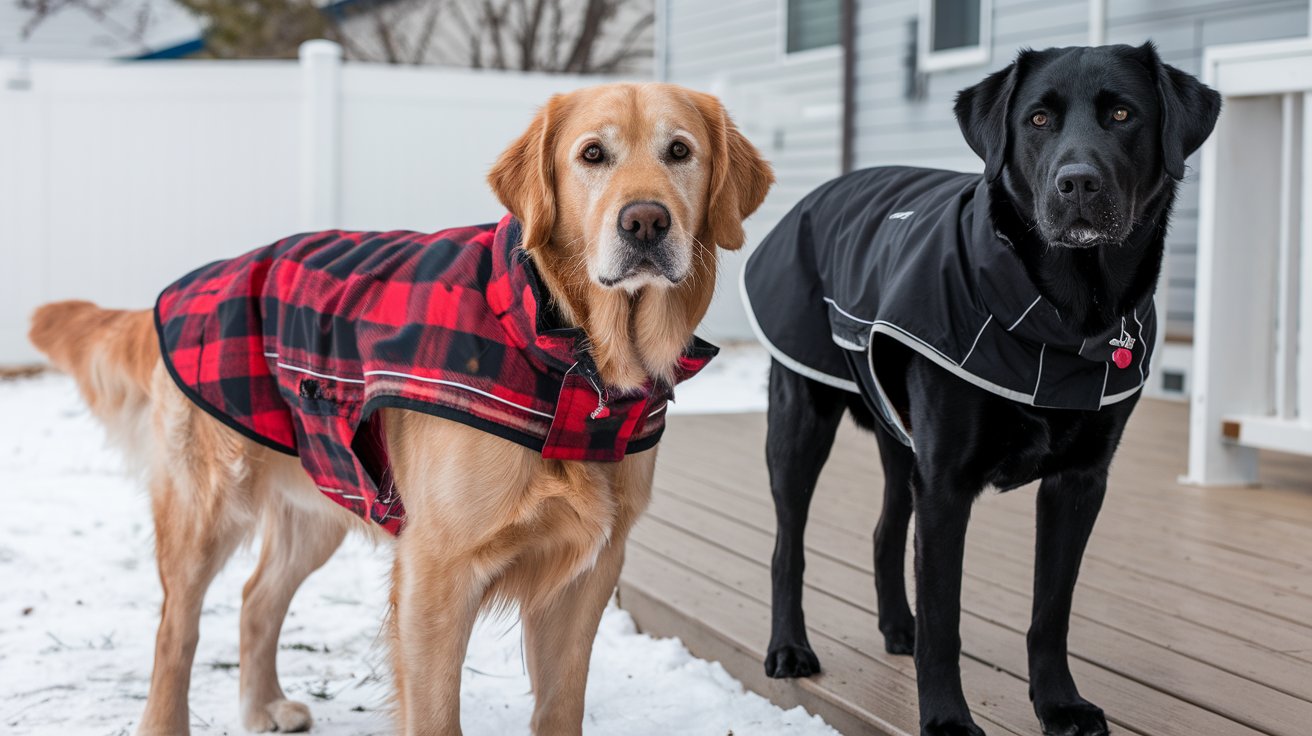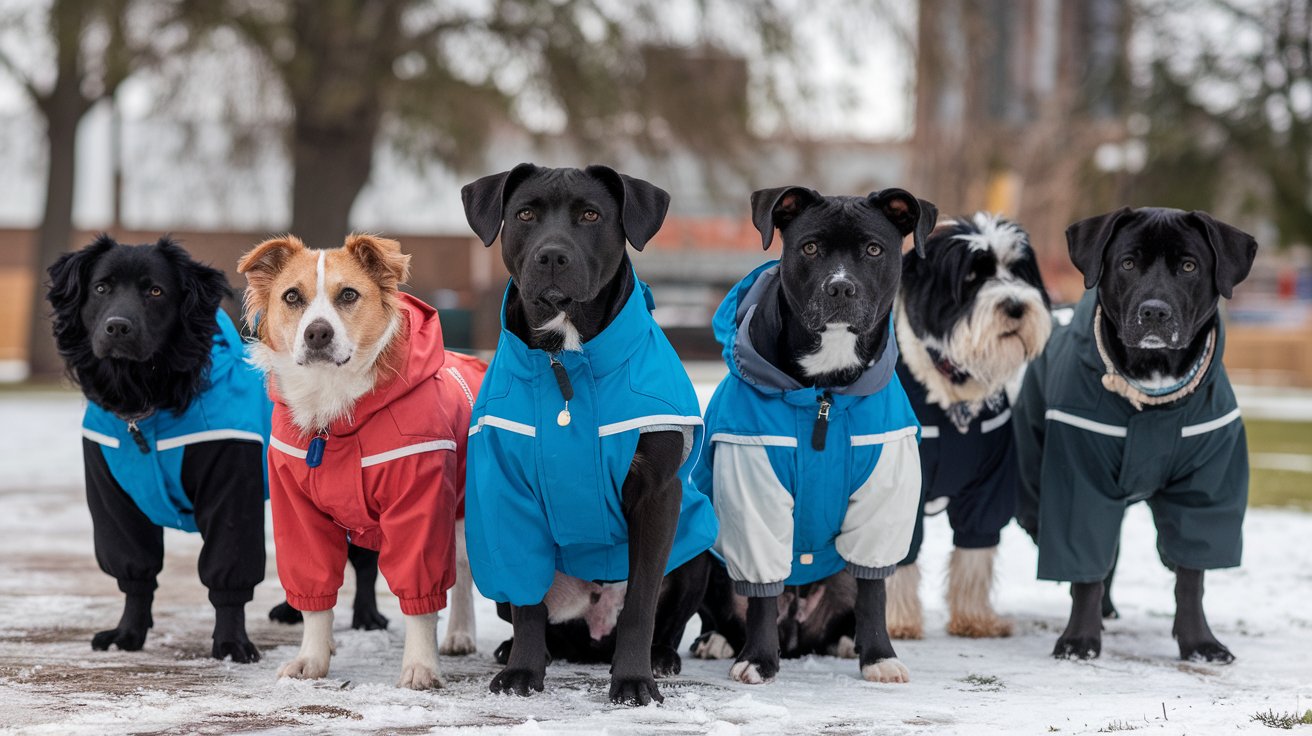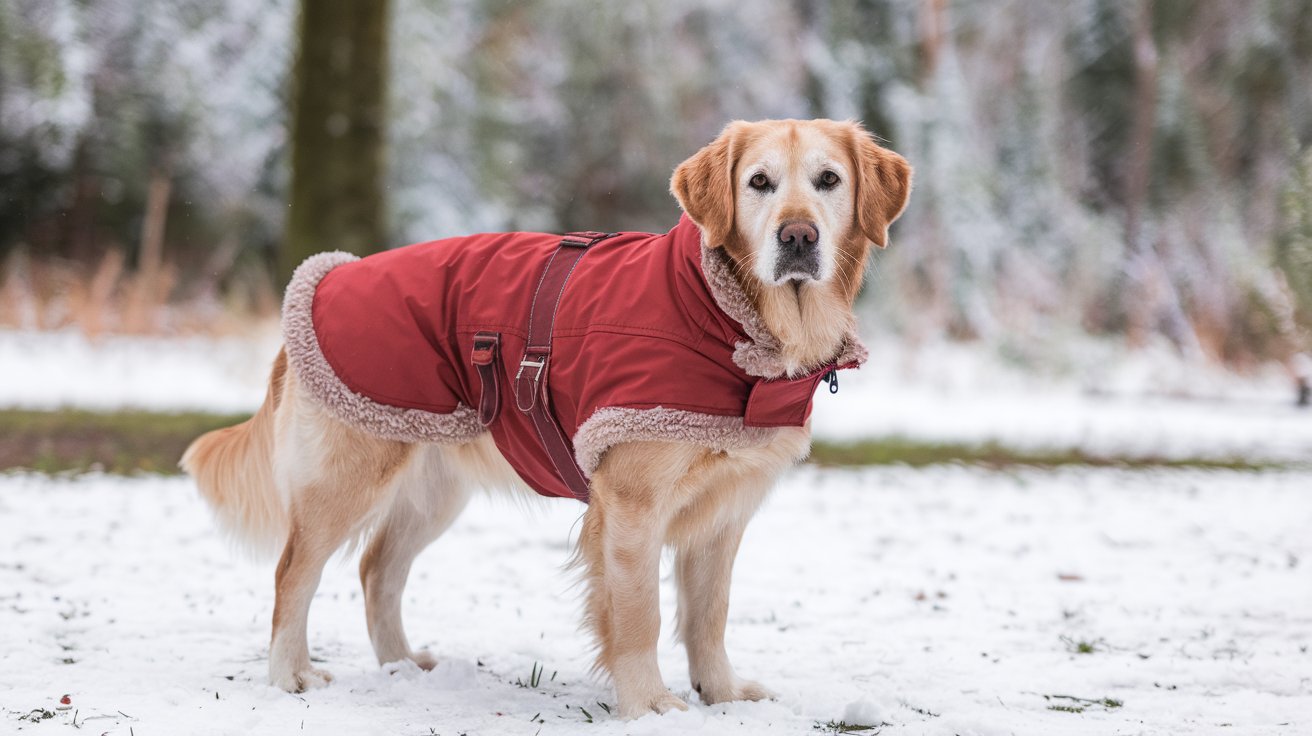Do Dogs Need Jackets in Winter? A Complete 100% Guide to Keeping Your Pup Warm and Safe
Do Dogs Need Jackets? A Guide to Keeping Your Dog Warm in Winter
As the temperatures start to drop and you find yourself bundling up in coats and scarves, it’s natural to wonder whether your dog might need some extra protection from the cold as well. While some dogs are equipped to handle chilly weather with their natural fur coats, others are more vulnerable and may benefit greatly from wearing a jacket. Dog jackets aren’t just a stylish accessory—they serve an essential function by keeping dogs warm, comfortable, and safe during cold weather.

This guide will explore which dogs need jackets, the types of jackets available, and how to choose the right one for your furry friend. Plus, we’ll discuss tips for fitting and cleaning jackets, as well as how to introduce one to your dog.
Which Dogs Need Jackets?
Not all dogs require jackets to stay warm in winter. Some breeds are naturally built to withstand cold weather, while others are more susceptible to the cold. Several factors, including breed, size, age, health, and coat type, determine whether your dog needs extra insulation during the winter months.
Cold-Weather Dog Breeds
Certain breeds are designed to thrive in cold environments. These dogs typically have thick, double-layered coats that insulate them against frigid temperatures. Examples include:
- Alaskan Malamutes
- Siberian Huskies
- Newfoundlands
- Bernese Mountain Dogs
- Saint Bernards
These breeds were historically bred for work in snowy, icy conditions, and their coats are tailored to protect them from freezing weather. Such dogs are usually well-equipped to handle the cold without additional protection.
Dogs That May Require Jackets
While some breeds thrive in cold weather, others are less adapted to handle it. Here are the types of dogs most likely to benefit from wearing jackets:

1. Small and Toy Breeds
Small breeds, such as Chihuahuas, Pomeranians, and Yorkshire Terriers, often struggle to regulate their body temperature in cold weather. Their small size means they lose body heat more quickly than larger dogs, making a jacket a necessity for walks and outdoor play during winter.
2. Hairless Breeds
Hairless breeds, such as the American Hairless Terrier, Chinese Crested, and Xoloitzcuintli, are especially vulnerable to the cold. Without a fur coat to protect them, these dogs need jackets to stay comfortable and warm when temperatures drop.
3. Dogs with Clipped Coats
Breeds that are typically groomed or shaved, like Poodles, Portuguese Water Dogs, and Schnauzers, lose much of the natural insulation provided by their fur. Even if these dogs are not naturally sensitive to the cold, a clipped coat can leave them exposed to frigid conditions.
4. Short Dogs
Short-legged breeds, such as Dachshunds and Basset Hounds, are more likely to have their bellies in contact with snow, ice, or wet surfaces. This exposure can make them colder faster than taller breeds, even if they have thick fur.
5. Lean-Bodied Dogs
Dogs with lean physiques, like Greyhounds, Whippets, and Italian Greyhounds, have minimal body fat to help them retain heat. Combined with their short coats, these breeds often feel the cold more acutely and benefit from wearing jackets during outdoor activities.
6. Short-Coated Sporting Dogs
Active dogs with short coats, such as Vizslas and German Shorthaired Pointers, are energetic and love being outdoors, even in winter. However, their thin coats don’t provide adequate insulation, making a jacket a smart choice for cold-weather outings.
7. Senior Dogs, Puppies, and Dogs with Health Conditions
Age and health also play a role in determining whether a dog needs a jacket. Puppies, senior dogs, and dogs with conditions like arthritis, heart disease, or low body weight are more susceptible to cold temperatures. A jacket can help them stay comfortable and safe in winter.
What Temperature is Too Cold for Dogs?
There isn’t a universal temperature threshold that applies to all dogs, as individual tolerance to cold weather varies. Dr. Jolee Stegemoller, DVM, explains that factors like coat type, health status, and a dog’s acclimation to cold weather should be considered.
A general guideline is to monitor the wind chill and keep playtime short if the temperature drops below 20°F. For dogs sensitive to the cold, 15–20 minutes outside may be enough before they need to warm up indoors.
Types of Dog Jackets and Their Features

When choosing a jacket for your dog, it’s important to consider the type of weather you’ll be facing and your dog’s specific needs. Jackets come in various styles and materials, designed for different levels of cold and activity.
1. Lightweight Jackets
Lightweight jackets are ideal for mildly cold weather. These jackets provide a layer of warmth without causing your dog to overheat. They’re great for fall walks or early winter days when the temperature is cool but not freezing.
2. Insulated Jackets
For colder climates, insulated jackets are essential. These thicker coats provide extra warmth and are perfect for snowy days or sub-zero temperatures. Look for jackets with materials like fleece or thermal linings for maximum insulation.
3. Raincoats
Even dogs that don’t get cold easily can benefit from raincoats in wet climates. Rain jackets keep your dog dry and prevent their fur from becoming waterlogged, which can make them feel cold and uncomfortable. These jackets also reduce the amount of time you’ll spend drying and grooming your dog after a walk.
4. Snowsuits and Bodysuits
Snowsuits offer full-body coverage and are particularly beneficial for hairless, lean-bodied, or small dogs. These suits protect your dog’s legs, belly, and back from snow, ice, and freezing wind.
Choosing the Right Dog Jacket
When selecting a jacket for your dog, there are several factors to keep in mind to ensure comfort, functionality, and safety:
1. Proper Fit
A jacket should fit snugly without restricting your dog’s movement. It should allow your dog to walk, run, and play comfortably. Avoid jackets that are too loose, as they can shift during activity or create hazards, like catching on objects.
To find the right fit:
- Measure your dog’s body length (from the base of the neck to the base of the tail).
- Measure the girth of your dog’s chest at its widest point.
- Refer to the manufacturer’s sizing chart to choose the best size.
2. Weather-Appropriate Materials
Choose a jacket made from materials suited to your climate. For snowy or wet weather, waterproof or water-resistant fabrics are ideal. For extremely cold temperatures, look for jackets with thermal linings or insulation.
3. Additional Features
Consider features like:
- Reflective Trim: Enhances visibility during early morning or evening walks.
- Leash Openings: Allows you to attach a leash to a harness or collar without removing the jacket.
- Sanitary Cut-Outs: Prevents mess and allows your dog to relieve themselves comfortably while wearing the jacket.
How to Introduce Your Dog to a Jacket

Some dogs may be hesitant to wear a jacket, especially if they’ve never worn clothing before. To help your dog adjust, follow these steps:
- Introduce the Jacket Gradually
Allow your dog to sniff and examine the jacket before putting it on. Reward them with treats and praise to create a positive association. - Try Short Wear Sessions Indoors
Put the jacket on your dog indoors for short periods. Encourage them to move around, play, or eat while wearing it to help them get comfortable. - Associate the Jacket with Fun Activities
Once your dog is comfortable wearing the jacket indoors, use it for enjoyable outdoor activities, like walks or playtime, to reinforce positive feelings.
Cleaning and Maintaining Dog Jackets
Keeping your dog’s jacket clean is essential for their health and comfort. Dirt, hair, and moisture can accumulate on the fabric, potentially causing skin irritation or creating a breeding ground for bacteria. To maintain your dog’s jacket:
- Wash it regularly, especially after snowy or muddy outings.
- Follow the manufacturer’s washing instructions, and choose machine-washable jackets for convenience.
- Ensure the jacket is completely dry before storing it to prevent mildew or odors.
Final Thoughts
Wearing a jacket can make a big difference for dogs during the winter, especially for those breeds and individuals that are more sensitive to the cold. By choosing the right type of jacket and introducing it to your dog gradually, you’ll ensure they stay comfortable, happy, and safe all winter long. Whether it’s a lightweight jacket for cool autumn walks or an insulated snowsuit for harsh winter storms, there’s a perfect option out there for every pup.
Remember, your dog’s comfort and safety should always come first. If you’re ever unsure whether your dog needs a jacket or what type to choose, consult with your veterinarian for personalized advice. Together, you and your furry friend can enjoy the colder months to their fullest, no matter what the weather brings!